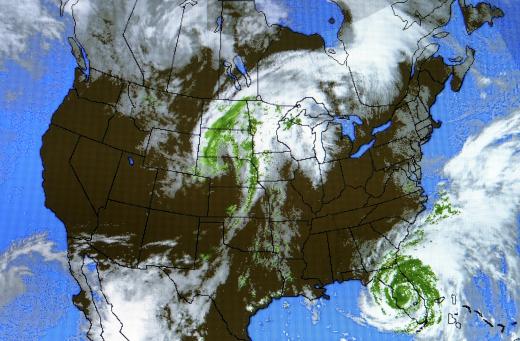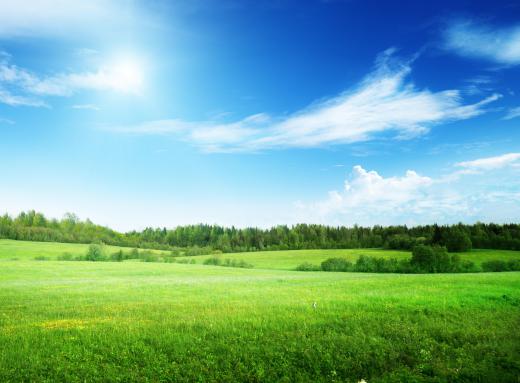What is a Weather Balloon?
 Mary McMahon
Mary McMahon
A weather balloon is a scientific instrument which is used to collect data about atmospheric weather conditions. Some people also call these balloons “sounding balloons,” because they take soundings of the atmosphere. This data is used in weather prediction, and to track general weather trends. Numerous agencies all over the world release weather balloons on a daily basis, and they generally share the information collected, in the interest of scientific cooperation.
A basic weather balloon will collect information about the ambient temperature, atmospheric pressure, and humidity. Typically, this information will be gathered during the ascent of the balloon and while it is hovering at altitude. The data is sent back to Earth with transponders. This type of balloon may also be used to collect information about wind speed and patterns, by transmitting its geographic location back to Earth.

The package of instruments in a weather balloon is called a radiosonde. The earliest radiosondes appeared in the 1930s in Russia, and other nations quickly adopted the technology as well. Generally, a radiosonde is designed for multiple uses, and it will be retrieved after it returns to Earth. Now and then the instrument packages are lost, but the data they collected in flight has already been sent back to Earth. Radiosondes may also be dropped from aircraft, in some cases, rather than being floated up on a balloon.

The body of a weather balloon is usually made from latex or a similar flexible material. It is inflated with hydrogen or helium, with varying levels of gas being used, depending on how high the balloon is going. The radiosonde is suspended from the balloon on a sturdy cord or rope, much like the basket of a hot air balloon. When the balloon reaches a certain altitude, it explodes, and a parachute deploys to gently land the radiosonde back on Earth. Scientists track its positioning signal to retrieve it, if possible.
Most weather monitoring organizations release weather balloons at least twice a day, and sometimes more frequently. Frequent releases are used when weather conditions rapidly change, suggesting the need for more data from the atmosphere. The data collected usually supplements other forms of meteorological observation, such as weather satellites and ground observation, creating a complete picture of the weather situation for scientists. Weather stations keep extensive records of their weather balloon data, allowing scientists to study weather patterns over many decades.
AS FEATURED ON:
AS FEATURED ON:












Discussion Comments
@Mor - Weather balloons are made to be tracked down and reused, more like a hot air balloon than a helium balloon, so that's why they don't get seen all that often. They go up so high I imagine you couldn't really see them when they are at the apex of their flight. And people who live near the launch points are probably used to them.
They do go very very high. I've heard of students who have attached digital cameras to weather balloons and managed to get them high enough to take a picture of the curve of the earth.
I've always wanted to try doing that myself. I've heard that all the plans for doing it are online and that it doesn't even cost that much but I've never got around to doing it.
I had no idea that people still used weather balloons in this day and age. They seem like something out of the 50's to me, probably because I associate them with alien sightings.
You know, it's become a joke with people to say that it "must have been a weather balloon" that was sighted rather than an actual alien spacecraft.
I think the government actually said at one point that a bunch of UFO sightings were actually caused by an errant weather balloon.
I guess I've just never heard of them outside of that context. But, you'd think they'd be more common in the sky if they are being released twice daily by various institutions who are checking the weather.
Post your comments